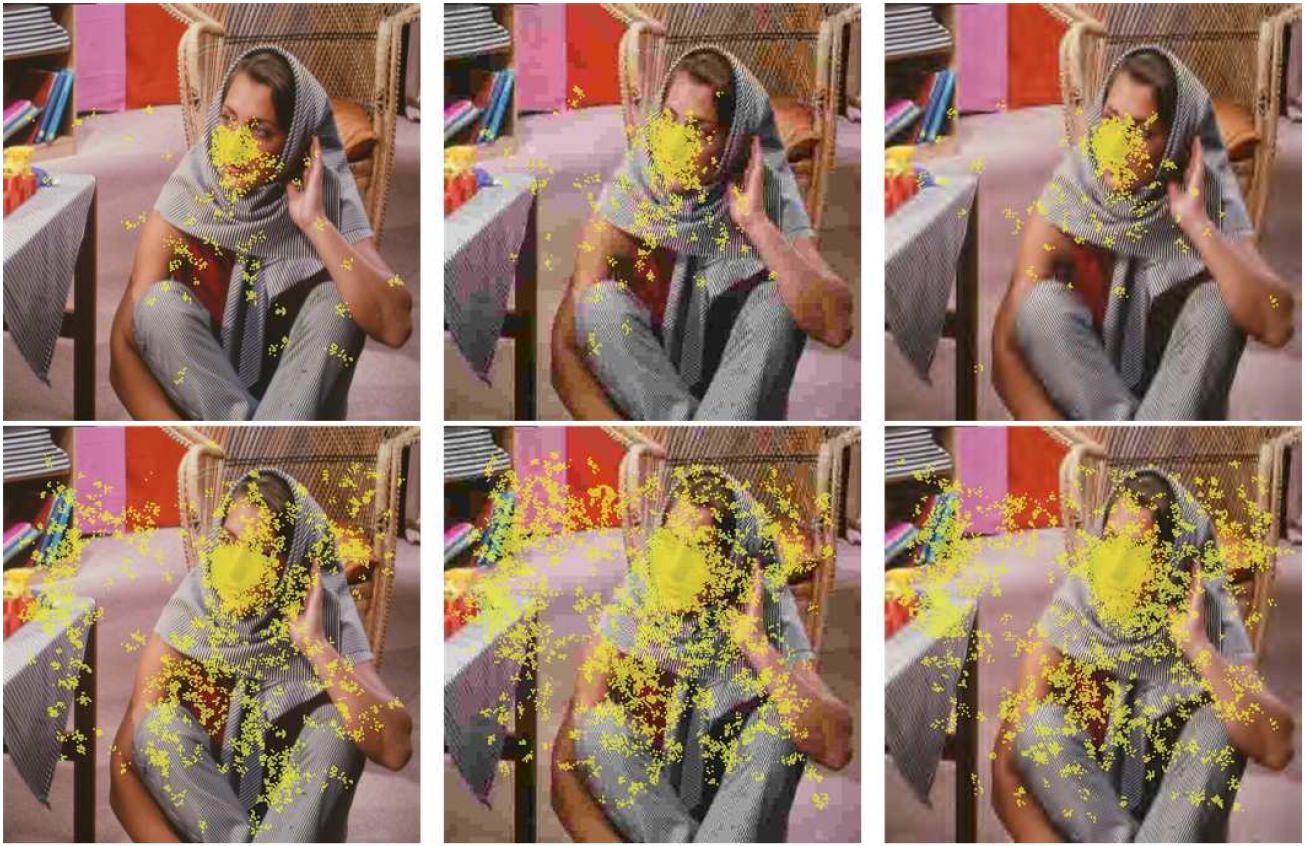Sensitivity of visual attention to coding artifacts on still pictures
O. Le Meur
Part III, Chapter 1, section 1.5 of Le Meur's Phd thesis (unpublished results)
Main Idea
The goal of the experiment conducted in 2005 was to examine the sensitivity of our visual attention to coding artifacts. Eye tracking experiments were conducted in free-vieiwng tasks and involved up to 40 observers. The degradation was obtained by either a JPEG or JPEG2000 coding. In the following, the similarity between human saliency maps is presented.Degree of similarity between human saliency maps stemming from an original and distorted pictures
Click on the pictures to look at the original picture.Qualitative analysis based on fixation maps:
- Figure 1.2 (page 147):
- Figure 1.3 (page 148):
Barba and Isabe pictures (on the left) were encoded by a JPEG (middle) and a JPEG2000 (right) encoder. Compression artifacts are visible.


Yellow crosses correspond to a fixation point. The rows illustrates from left to right the fixation maps for the original, the JPEG and the JPEG200 pictures. The first row shows fixations occuring between 0 and 2 seconds of viewing. The second row shows fixations between 0 and 14 seconds of viewing.

Linear correlation between fixation maps of distorted and original pictures:
- Table 1.1 and 1.2 (page 147):
| Pictures / Viewing time | 2s | 8s | 14s |
|---|---|---|---|
| Barba | 0.986 | 0.979 | 0.981 |
| Isabe | 0.988 | 0.991 | 0.987 |
| Pictures / Viewing time | 2s | 8s | 14s |
|---|---|---|---|
| Barba | 0.981 | 0.984 | 0.98 |
| Isabe | 0.991 | 0.979 | 0.979 |